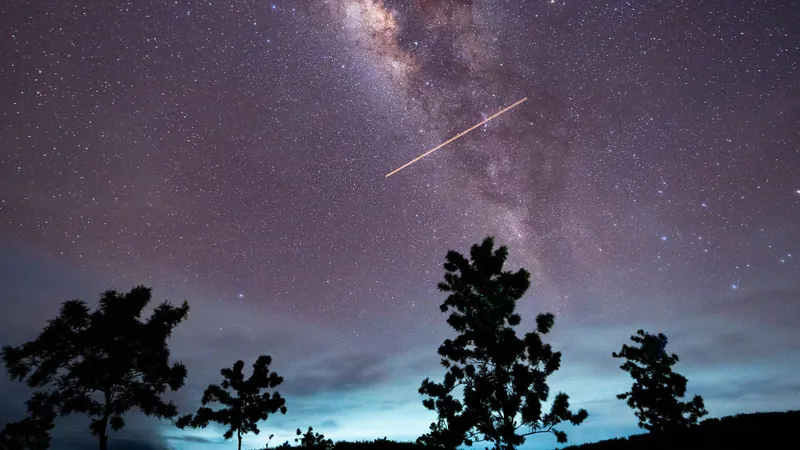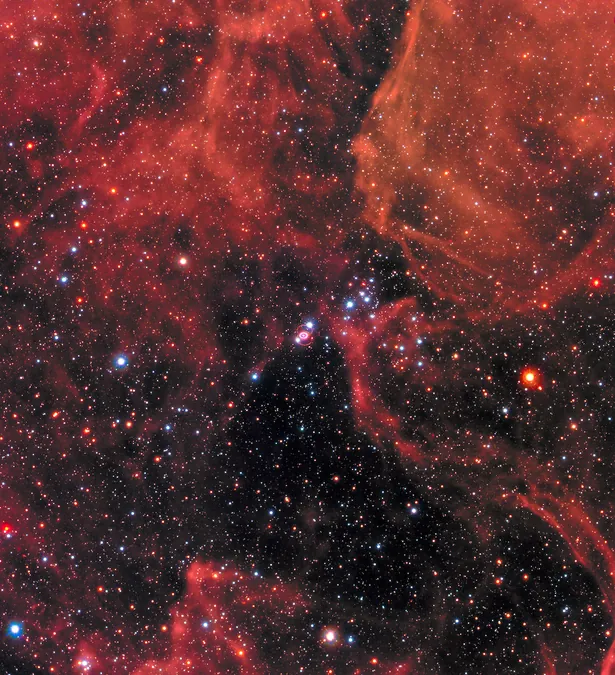
Get Ready for a Celestial Spectacle: The Eta Aquarids Meteor Shower is Here!
2025-05-04
Author: Olivia
The Night Sky Will Dazzle Soon!
Prepare yourself, sky gazers! Over the coming weeks, the night sky will transform into a breathtaking display courtesy of the Eta Aquarids meteor shower, reaching its sensational peak on the morning of Tuesday, May 6. This annual phenomenon happens when Earth crosses the path of cosmic debris left behind by Halley’s Comet, which makes its grand pass by our planet only once every 76 years.
When to Catch the spectacle!
If you want to witness this celestial spectacle, mark your calendars! While you can enjoy meteor sightings until May 28, the prime viewing hours will be late Monday, May 5, into the early hours of Tuesday. Expect the skies to light up with as many as 50 meteors per hour! Just keep in mind that the visibility will be a tad challenged by a two-thirds full moon.
Where to See the Best Meteor Show!
For the best viewing experience, head to the Southern Hemisphere. However, don’t fret—this magical display won’t be limited to just one region; people across the globe will also have the chance to witness up to 30 meteors per hour in North America, Europe, and Asia, according to the American Meteor Society.
No Telescope Needed!
Worried about fancy equipment? No need! To fully enjoy the Eta Aquarids, just find a quiet spot away from city lights. NASA recommends packing a sleeping bag, a blanket, or even a lawn chair. Lie back on your back with your feet facing east, and try to take in as much of the sky as possible.
Maximize Your Viewing Experience!
Pro tip: The longer you watch, the more meteors you’ll see as your eyes adjust to the night sky. So tuck away your phone and boost your chances of a dazzling display!
What Exactly is a Meteor Shower?
For those curious minds wondering what a meteor shower is, here’s the scoop! These events occur a few times each year when Earth glides through debris trails from comets. As these tiny fragments streak into our atmosphere at incredible speeds, they heat up and burn up, leaving behind a luminous trail that captivates onlookers.









 Brasil (PT)
Brasil (PT)
 Canada (EN)
Canada (EN)
 Chile (ES)
Chile (ES)
 Česko (CS)
Česko (CS)
 대한민국 (KO)
대한민국 (KO)
 España (ES)
España (ES)
 France (FR)
France (FR)
 Hong Kong (EN)
Hong Kong (EN)
 Italia (IT)
Italia (IT)
 日本 (JA)
日本 (JA)
 Magyarország (HU)
Magyarország (HU)
 Norge (NO)
Norge (NO)
 Polska (PL)
Polska (PL)
 Schweiz (DE)
Schweiz (DE)
 Singapore (EN)
Singapore (EN)
 Sverige (SV)
Sverige (SV)
 Suomi (FI)
Suomi (FI)
 Türkiye (TR)
Türkiye (TR)
 الإمارات العربية المتحدة (AR)
الإمارات العربية المتحدة (AR)